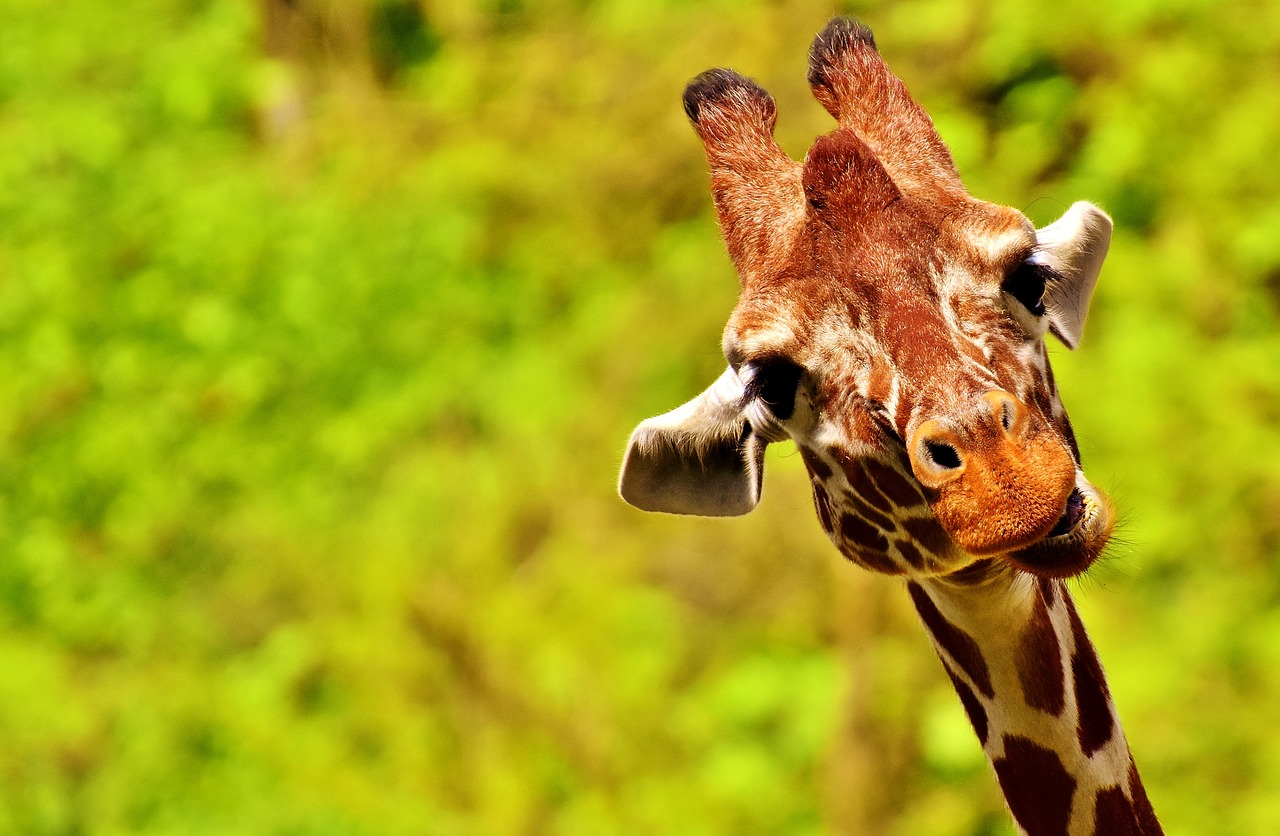
“The giraffe is a true image of elegance, and yet its movements are so fluid and natural, it seems almost as if it is floating.”
Frans Lanting
Background:
Welcome to the virtual giraffe exhibit! Giraffes are the tallest mammals on Earth, and they are known for their long necks and beautiful coat patterns. There are nine different types of giraffes, and they all have their unique features and characteristics. Here is a brief description of each type:
-
Northern Giraffe (Giraffa camelopardalis): This is the tallest subspecies of giraffe, and they have a distinctive light coat color and irregular spots.
-
Southern Giraffe (Giraffa giraffa): This subspecies has a darker coat and rounder spots.
-
Masai Giraffe (Giraffa tippelskirchi): They are the largest subspecies of giraffe, and they have a jagged spot pattern.
-
Reticulated Giraffe (Giraffa reticulata): This subspecies has a unique coat pattern of interconnected spots that create a net-like appearance.
-
West African Giraffe (Giraffa camelopardalis peralta): They have a lighter coat color and patches instead of spots.
-
Kordofan Giraffe (Giraffa camelopardalis antiquorum): This subspecies has large, blocky spots and a darker coat color.
-
Nubian Giraffe (Giraffa camelopardalis camelopardalis): They have large, irregular spots and a lighter coat color.
-
Rothschild’s Giraffe (Giraffa camelopardalis rothschildi): This subspecies has a unique coat pattern of white legs and no spots below the knees.
-
Thornicroft’s Giraffe (Giraffa camelopardalis thornicrofti): They have a unique coat pattern with jagged-edged spots and no spots on their lower legs.
We hope you enjoy learning about giraffes and their different types, unique features, and fun facts. Don’t forget to explore our virtual exhibit and watch our live cam of giraffes in action. Thank you for joining us today!
As you can see, giraffes are fascinating animals with many interesting qualities. We hope that our exhibit provides you with a new appreciation for these gentle giants and a better understanding of their unique characteristics.
Remember, we all have a responsibility to protect and preserve the natural world, including giraffes and their habitats. By supporting the charities listed below and / or taking other actions in your daily life, you can help make a difference.
Thank you for visiting our virtual giraffe exhibit!
Quick Facts:
- Giraffes can reach up to 18 feet tall.
- They have a long neck with only seven vertebrae, the same number as humans.
- Giraffes can run up to 35 miles per hour.
- Their tongue is long and prehensile, which means they can use it to grab things like leaves from trees.
- They only need to drink water once every few days because they get most of their water from the leaves they eat.
- Giraffes are social animals and live in herds.
Fun Facts:
- Giraffes sleep standing up and only for short periods of time.
- They have a unique way of walking called “pacing” where both legs on one side move at the same time.
- Giraffes can clean their ears with their tongue.
- Their spots are like human fingerprints, no two giraffes have the same pattern.
- They have a special valve system in their necks that keeps blood from rushing to their heads when they bend down to drink.
Fun Facts for Kids:
- Giraffes can eat up to 75 pounds of leaves and twigs in a single day.
- Baby giraffes are called calves and can stand up and walk within an hour of being born.
- Giraffes have long eyelashes to protect their eyes from the sun.
- They make a variety of sounds including grunts, snorts, and hisses, but they don’t make any noise when they communicate with each other.
- Giraffes are gentle animals and have been known to “dance” together by swaying their necks back and forth.
References:
Additional Resources:
Wild Africa | Giraffe Behavior and Lifestyle Habitat
Live Cam – Johari the Giraffe Cam (Available Intermittently)










